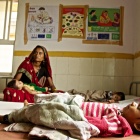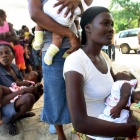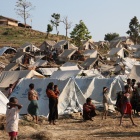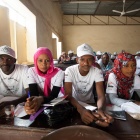Student Commentaries Survey Global Health Topics
Global health is an exciting and vibrant field of research and practice. The University at Buffalo provides many different educational forums for students to examine the meaning of global health, aid, and governance.
Working with Dr. Kasia Kordas in EEH 521 Global Health, a graduate level course housed within the Department of Epidemiology and Environmental Health, students from across multiple disciplines studied the underlying reasons for poverty, hunger and malnutrition, and health disparities in low and middle-income countries, particularly as they affect women and children. Students also discussed interventions and current solutions meant to alleviate these problems.
Dr. Kordas’ students developed 2,000-word commentaries to cover any one of the categories below: 1) something the student read or heard in class and wanted like to learn more about; 2) something the student disagreed with and wanted to propose their point of view or interpretation; 3) some issue or argument that the student wanted to reframe based on other evidence, another theory or discipline; 4) a critique and criticism of the status quo in current global health thinking or practice; or 5) a call to action on an emerging or forgotten issue. The commentaries below represent the work developed by those students.
Student Commentaries
Written by Jessica Scates









